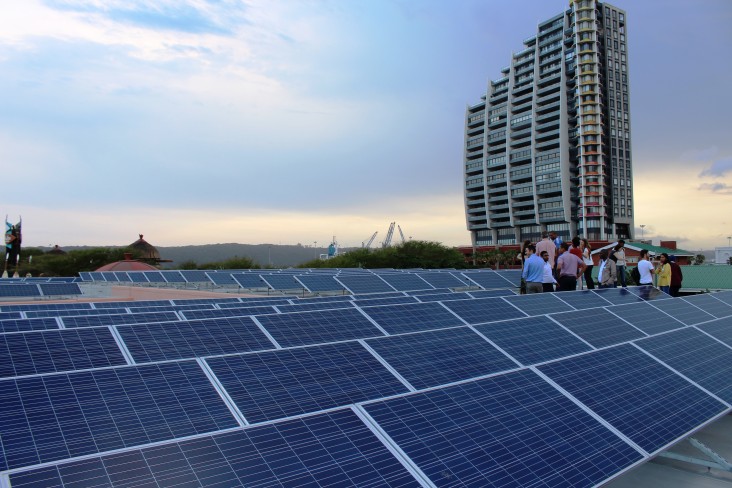
Cities and towns are key players in curbing greenhouse gas emissions
By: Lea Terhune
Switching to clean energy takes preparation, but the results can bring jobs and other benefits to communities and reduce harmful air pollution.
That’s why USAID has been partnering with the government of South Africa to assess the best approaches for municipalities, to give technical assistance, and to connect viable green-energy projects with private financing.
The USAID South Africa Low Emissions Development program (SA-LED) aims to facilitate the transition to a low-carbon economy and involve small-business owners in the process. Types of projects undertaken include renewable energy, waste management and energy efficiency.
To boost this endeavor, USAID is doing preparatory work for Nelson Mandela Bay’s planned rooftop solar photovoltaic (PV) scheme, which will add more renewables to the power mix.
New projects bring jobs. “The ultimate aim is to support the South African government, and municipalities in particular, in accelerating green growth in line with South Africa’s development plans,” says USAID program manager Graham Paul. “Even though we have a low-greenhouse-gas-emissions ― or ‘green’ ― focus, it ultimately results in economic growth.”
The USAID program also helps development of more efficient, environmentally sound waste management. Landfills are sources of some of the most harmful emissions. The Blue Karoo aquaculture project in Dr. Beyers Naudé Local Municipality, for example, is getting technical assistance to explore using fish waste as potential biogas. USAID is supporting investment in the aquaculture program, expanding it, and helping to create jobs in the area.
While the scope of the first phase of work on such projects has involved feasibility studies and developing local technical expertise, Beyers says they are now focused on “co-benefits” ― jobs, environmental impact, and lifting up youth and women.
The projects currently in the low-emissions development program include analysis and recommendations to develop green communities with low-emissions building standards, solar PV, energy efficiency and environmentally sound waste management.
“The green economy is gaining traction in South Africa,” Beyers says.







Comment
Make a general inquiry or suggest an improvement.